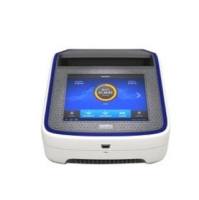Electromobility Shift Analysis (EMSA) Applied to the Study of NF-kappa B Binding Interactions in Vascular Smooth Muscle Cells
互联网
460
The nuclear factor-kappa B (NFκB) family of transcription factors has emerged as a signaling pathway that figures prominently in a cell’s initial response to a plethora of inflammatory stimuli. Modified lipids, oxidative stress, bacterial endotoxins, growth factors and cytokines, such as platelet-derived growth factor (PDGF) and interleukin-1 (IL-1), are among the stimuli that free NFκB dimers from their cytosolic inhibitor proteins leading to nuclear translocation of NFκB and transactivation of target genes (1 –3 ). The smooth muscle cells (SMC) of the vasculature express components of this pathway and are activated by these stimuli, promoting dysregulation of gene expression by cells within the atherosclerotic vessel. Indeed, NFκB proteins have been localized within the nuclei of vascular SMC at sites of human atherosclerotic lesions, suggesting a role for NFκB in activation of this cell type in vivo (4 –6 ). NFκB participates in dysregulated gene expression not only by SMC but also by endothelial cells and macrophages, prominent cell types within atherosclerotic lesions, thus much attention has focused on the workings of this signaling pathway within vascular cells and its role in atherogenesis.









